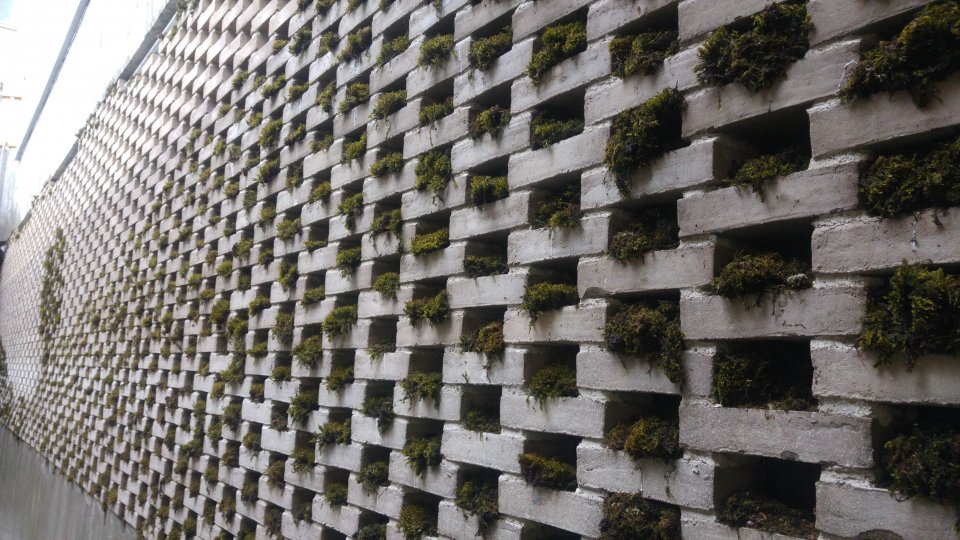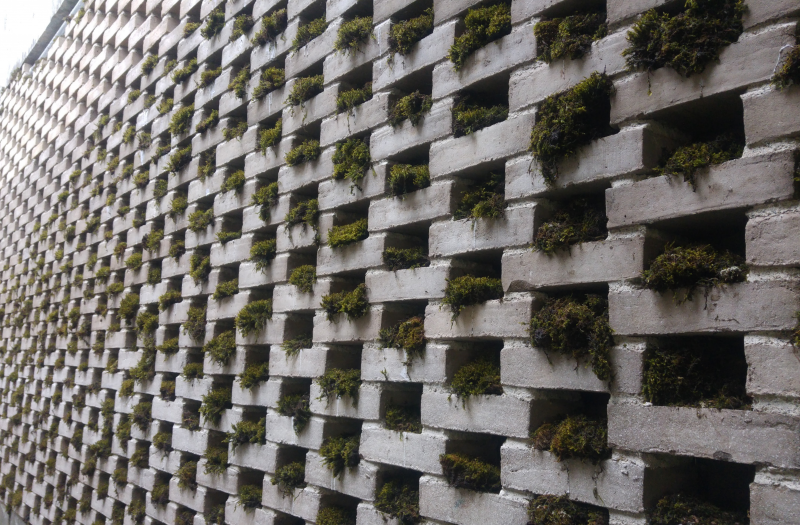Moss for green infrastructure

Green roofs are a potential way to reduce the effect of climate change in cities. Urban storm-water management needs new innovative ways to handle the increased risk of storm-water floods. Also, urban heat island effect can be reduced with urban green infrastructure. Applying green roofs can be difficult especially when retro-fitting them in old buildings or structures with low load capacity. Ultra-thin moss roofs are a promising new feature that are low maintenance and extremely light weight but can have the same benefits as other green roof types.
Objective of these prototype moss installations was to find out the possible challenges of using moss in different locations and structures. We need to know what type of moss can be used and what are the actual costs of building moss green roofs and walls.
|
A moss-brick wall was built in Helsinki Jätkäsaari. Structure of the wall was loose stacked bricks with minimum of plaster used. Carefully selected mosses were added into the holes. Small amount of water soluble glue was added into the holes. Moss wall is carefully moisturized |
Here the challenges addressed were climate resilience, water management, green space management and potential for economic opportunities and green jobs.
The expected impacts of wide spread use of ultra-thin moss roof solutions include:
- Reduce costs for water treatments
- Improve water quality
- awareness &knowledge about NbS
- Increase willingness to invest in NbS
- Creation of jobs relating to construction & maintenance of NbS
- Increase biodiversity
- Increase quality and quantity of green and blue infrastructure
- Increase connectivity and functionality of green and blue infrastructure
- Greater ecological connectivity across urban regenerated sites
- Carbon sequestration and storage
- More energy efficient buildings
- Reduce load to sewer system
- Increasing infiltration
- Reduce run-off
- Flood peak reduction
- Reducing temperature at meso or micro scale
- Increase infiltration and water storage
Findings from these test roofs can be later used for upscaling the process of planning and building ultra-thin moss roofs. Wider use of green roofs and especially moss roofs needs actions like Helsinki city’s green roof initiative (http://scandinavian-green-roof.org/news/new-green-roof-policy-for-the-ci...)
We found that building ultra-thin moss roof is cost-effective way of building green roofs. We can apply moss roofs to places that were previously unreachable, and the maintenance of moss roofs is care free.
Funding for each moss roof came from the owner of these buildings.
Juhamatti Niemi-kapee






